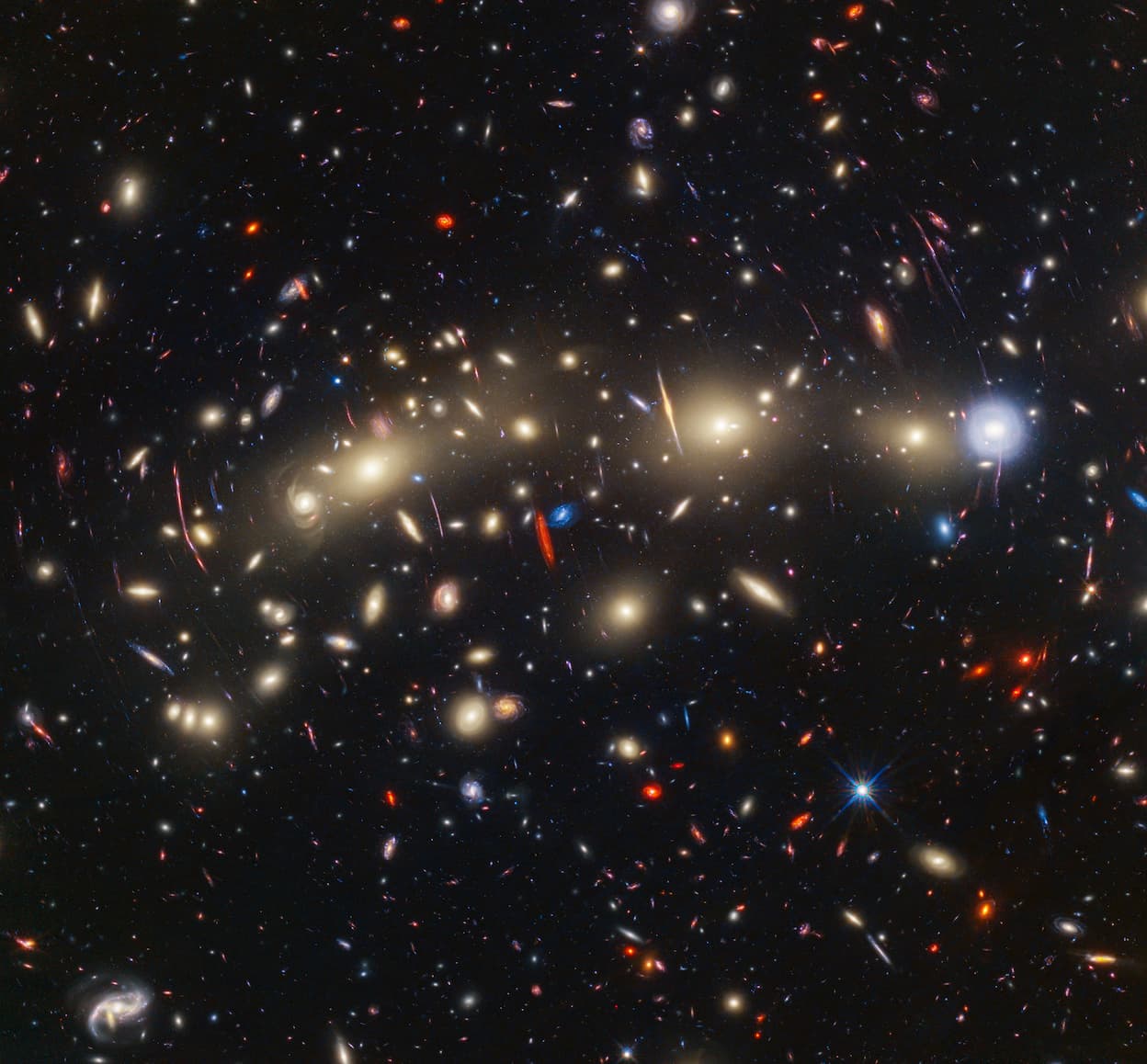Imagine a portion of the night sky about 1/15th of the diameter of the Moon. Now combine visible light observations from Hubble with infrared data from the James Webb Space Telescope, and you get this:

Look at the number of galaxies!! Hundreds of billions of stars in each one. All in one small patch of the night sky (granted that's a galaxy cluster). Wow